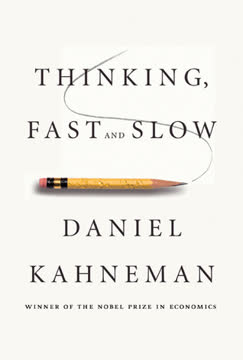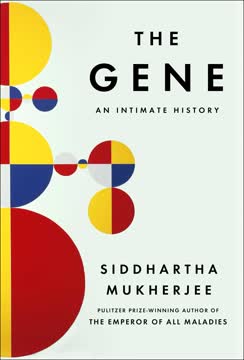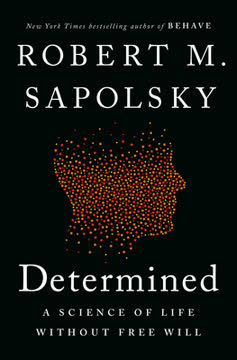Key Takeaways
1. Behavior is shaped by complex interactions of genes, environment, and culture
Genes are not autonomous agents commanding biological events.
Genetic influence is complex. While genes play a role in behavior, their effects are often small and highly dependent on environmental factors. Gene-environment interactions mean that the same gene can have different effects in different contexts. For example:
- The MAOA gene, once dubbed the "warrior gene," only increases aggression in individuals who experienced childhood abuse
- The DRD4 gene, associated with novelty-seeking, has different effects depending on cultural context
Cultural factors are crucial. Culture shapes how genes are expressed and how environmental factors impact behavior. Some key cultural influences include:
- Collectivist vs. individualist orientations
- Socioeconomic inequality
- Religious and ideological beliefs
- Historical experiences of conflict or cooperation
2. The brain's structure and function evolve throughout life, influencing behavior
Crucially, the final brain region to fully mature (in terms of synapse number, myelination, and metabolism) is the frontal cortex, not going fully online until the midtwenties.
Neuroplasticity is ongoing. The brain continues to change and adapt throughout life in response to experiences and environmental inputs. Key aspects of neuroplasticity include:
- Synaptic pruning and strengthening
- Formation of new neurons (neurogenesis) in certain brain regions
- Changes in myelination affecting signal transmission speed
Critical periods exist. Certain developmental windows are especially important for shaping brain structure and function:
- Early childhood: Rapid synapse formation and pruning
- Adolescence: Maturation of prefrontal cortex and emotional regulation systems
- Adulthood: Ongoing plasticity, but at a slower rate than earlier periods
3. Hormones play a nuanced role in shaping social behavior and aggression
Testosterone makes us more willing to do what it takes to attain and maintain status.
Context is key. Hormones like testosterone and oxytocin don't have simple, universal effects on behavior. Their impact depends on social context and individual differences:
- Testosterone can increase prosocial behavior if that's what's needed to gain status
- Oxytocin enhances in-group bonding but can increase hostility to out-groups
Hormone-behavior relationships are bidirectional. Behavior can influence hormone levels just as hormones influence behavior:
- Winning a competition increases testosterone levels
- Social bonding increases oxytocin levels
4. Childhood experiences have lasting impacts on adult behavior and brain function
Childhood adversity increases the odds of an adult having (a) depression, anxiety, and/or substance abuse; (b) impaired cognitive capabilities, particularly related to frontocortical function; (c) impaired impulse control and emotion regulation; (d) antisocial behavior, including violence; and (e) relationships that replicate the adversities of childhood (e.g., staying with an abusive partner).
Early stress has long-term effects. Childhood adversity can lead to lasting changes in brain structure and function:
- Elevated stress hormones affect development of the hippocampus and prefrontal cortex
- Altered emotional processing in the amygdala
Positive experiences matter too. Supportive, nurturing environments in childhood promote healthy brain development and resilience:
- Secure attachment promotes better emotional regulation
- Rich, stimulating environments enhance cognitive development
5. Adolescence is a critical period for brain development and behavioral patterns
If by adolescence limbic, autonomic, and endocrine systems are going full blast while the frontal cortex is still working out the assembly instructions, we've just explained why adolescents are so frustrating, great, asinine, impulsive, inspiring, destructive, self-destructive, selfless, selfish, impossible, and world changing.
Prefrontal cortex maturation is key. The late development of the prefrontal cortex relative to other brain regions explains many adolescent behaviors:
- Increased risk-taking and sensation-seeking
- Heightened emotional reactivity
- Difficulty with impulse control and long-term planning
Peer influence peaks. Adolescents are particularly susceptible to social influence:
- Increased sensitivity to social rejection
- Strong drive for peer approval
- Greater risk-taking in presence of peers
6. Cultural differences significantly impact behavior, cognition, and social norms
Culture's impact is enormous.
Perception and cognition vary. Different cultures shape how people process information and perceive the world:
- Individualist cultures focus on central objects in visual scenes
- Collectivist cultures attend more to contextual information
Social behavior is culturally influenced. Cultural norms shape interpersonal interactions and moral judgments:
- Concepts of fairness and justice vary across cultures
- Emotional expression and regulation differ
Cultural evolution is ongoing. Cultures continue to change and adapt:
- Globalization leads to cultural mixing and hybridization
- Technological changes create new cultural practices and norms
7. Evolution has shaped human behavior, but we often deviate from evolutionary predictions
We are by nature profoundly confused—mildly polygynous, floating somewhere in between.
Human mating systems are flexible. Unlike many species with fixed mating patterns, humans show a mix of monogamous and polygamous tendencies:
- Most cultures allow polygyny, but most individuals are socially monogamous
- Sexual dimorphism in humans is intermediate between pair-bonded and tournament species
Cooperation extends beyond kin. Humans show unprecedented levels of cooperation with non-relatives:
- Large-scale societies require cooperation among strangers
- Cultural institutions promote cooperation beyond immediate kin groups
8. Cooperation and altruism emerge from a combination of individual, kin, and group selection
Animals don't behave for the good of the species. They behave to maximize the number of copies of their genes passed into the next generation.
Multiple levels of selection operate. Human behavior is shaped by:
- Individual selection: Traits that benefit personal survival and reproduction
- Kin selection: Helping relatives who share genes
- Reciprocal altruism: Cooperation with non-relatives for mutual benefit
- Group selection: Traits that benefit the group, even at individual cost
Cultural practices influence selection. Human culture creates new selection pressures:
- Social norms can promote group-beneficial behaviors
- Institutions like religion and law enforce cooperation
9. Neuroscience reveals the biological underpinnings of our best and worst behaviors
The brain is not where a behavior "begins." It's merely the final common pathway by which all the factors in the chapters to come converge and create behavior.
Neural circuits for morality and empathy. Key brain regions involved in prosocial behavior:
- Prefrontal cortex: Executive control and moral reasoning
- Anterior cingulate cortex: Empathy and conflict monitoring
- Amygdala: Emotional processing and fear response
Biological bases of aggression and violence. Neural and hormonal factors contribute:
- Imbalances between prefrontal control and limbic emotional reactivity
- Alterations in serotonin and dopamine signaling
- Early life stress affecting brain development
Plasticity allows for change. Understanding the neurobiology of behavior opens possibilities for intervention:
- Targeted therapies to enhance prefrontal function or reduce amygdala reactivity
- Social and environmental interventions to promote healthy brain development
Human's unique free will download Behave PDF free 2023 the biology of humans at our best and worst by Robert Sapolsky.
Last updated:
FAQ
What's Behave: The Biology of Humans at Our Best and Worst about?
- Exploration of Human Behavior: The book examines the biological underpinnings of human behavior, focusing on aggression, violence, and prosocial actions. It explores how factors like neurobiology and hormones influence our actions.
- Interdisciplinary Approach: Robert M. Sapolsky integrates insights from neurobiology, psychology, and sociology to provide a comprehensive understanding of human behavior. He argues that behavior requires a multifaceted perspective.
- Contextual Understanding: Sapolsky emphasizes that context is crucial in determining whether a behavior is seen as good or bad, highlighting how the same action can be interpreted differently based on circumstances.
Why should I read Behave: The Biology of Humans at Our Best and Worst?
- Insightful Analysis: Sapolsky offers a deep dive into the complexities of human behavior, making it valuable for those interested in psychology, biology, or social sciences. His engaging style makes complex concepts accessible.
- Relevance to Current Issues: The book addresses societal issues like violence, morality, and empathy, providing a scientific framework to understand these phenomena, making it timely in today's context.
- Encourages Critical Thinking: By challenging simplistic views of behavior, Behave encourages readers to think critically about human motivations, promoting a nuanced understanding of morality and ethics.
What are the key takeaways of Behave: The Biology of Humans at Our Best and Worst?
- Biology and Behavior Interconnected: Biological factors, including hormones and brain structure, significantly influence behavior. Sapolsky argues against distinguishing between biological, psychological, or cultural aspects of behavior.
- Context Matters: The interpretation of behaviors as good or bad is heavily dependent on context. Sapolsky notes that we often hate the wrong kind of violence but love it in the right context.
- Complexity of Human Nature: Human behavior is influenced by genetics, environment, and social learning, requiring a holistic view rather than isolated components.
What are the best quotes from Behave: The Biology of Humans at Our Best and Worst and what do they mean?
- “The opposite of love is not hate; its opposite is indifference.” This highlights the importance of empathy and engagement, suggesting that apathy can be more damaging than active dislike.
- “We are always shadowed by the threat of other humans harming us.” Reflects the inherent risks in human interactions and the potential for violence, underscoring the need to understand aggression's roots.
- “The more we consume, the hungrier we get.” Addresses the paradox of modern life, where increased access to pleasure can lead to greater dissatisfaction, suggesting insatiable desires can have negative consequences.
How does Robert M. Sapolsky explain aggression in Behave?
- Biological Basis of Aggression: Hormones like testosterone and neurobiological factors contribute to aggressive behavior. Testosterone amplifies preexisting tendencies rather than directly causing aggression.
- Contextual Triggers: Aggression often responds to specific social contexts or challenges, with testosterone levels rising in response to social challenges, increasing aggressive behavior likelihood.
- Learning and Experience: Aggression is shaped by social learning and past experiences, with learned behaviors playing a significant role in future aggression.
What role do hormones play in human behavior according to Behave?
- Influence of Testosterone: Testosterone amplifies existing tendencies rather than causing aggression outright, with its actions being contingent and amplifying.
- Oxytocin and Social Bonds: Oxytocin fosters social bonding and prosocial behavior but also promotes in-group favoritism, making us more prosocial to Us and worse to everyone else.
- Stress Hormones: Chronic stress hormones impair cognitive function and emotional regulation, leading to impulsive and aggressive behaviors, affecting decision-making and empathy.
How does Behave address the concept of free will?
- Skepticism of Free Will: Sapolsky doubts traditional free will, suggesting behaviors are influenced by biological and environmental factors beyond individual control, leading to more compassionate views.
- Complex Interplay of Factors: Behavior results from genetics, hormones, and social context, making it difficult to attribute actions solely to free will.
- Implications for Justice: This perspective challenges moral culpability, suggesting understanding behavior's biological basis can lead to more effective interventions than punitive measures.
What does Robert M. Sapolsky say about the effects of childhood adversity in Behave?
- Long-term Consequences: Childhood adversity links to negative outcomes in adulthood, including mental health issues and antisocial behavior, with multiple adversities dimming chances of a happy adulthood.
- Biological Mechanisms: Early-life stressors elevate glucocorticoid levels, impairing brain development and function, increasing anxiety, depression, and aggression risks.
- Resilience Factors: Despite risks, many individuals with childhood adversity do not develop significant issues, with supportive relationships mitigating adversity effects.
How does Behave explain the relationship between empathy and behavior?
- Empathy as a Complex Emotion: Empathy involves emotional and cognitive components, allowing understanding and sharing of others' feelings, leading to prosocial behavior but can be overwhelming.
- Neurobiological Underpinnings: Brain regions like the anterior cingulate and insula activate when witnessing others in pain, with regulation of adverse empathic emotions leading to prosocial actions.
- Adolescent Empathy: Adolescents experience heightened empathy, leading to positive and negative outcomes, with empathic hyperarousal sometimes hindering effective action.
How does Behave address the impact of culture on behavior?
- Cultural Influences on Behavior: Cultural norms and values shape behaviors, including aggression and prosocial actions, with culture shaping how and where we look at the world.
- Variability Across Cultures: Behaviors acceptable in one culture may differ in another, with moral judgments differing cross-culturally, crucial for addressing global issues.
- Cultural Context in Empathy: Cultural background affects empathic responses and social interactions, with oxytocin's actions depending dramatically on context, influencing how we relate to others.
How does Behave connect behavior to evolutionary biology?
- Evolutionary Perspective on Behavior: Behaviors are understood through evolution, with traits enhancing survival and reproduction favored over time.
- Kin Selection and Altruism: Behaviors promoting relatives' survival can be advantageous for passing on shared genes, illustrating altruism's evolutionary basis.
- Cultural Evolution: Biological traits evolve, and cultural traits change over time, influenced by environmental pressures and social dynamics.
How does Behave relate to current societal issues?
- Understanding Violence and Aggression: Insights into biological and environmental factors contributing to violence and aggression, essential for reducing violence and promoting peace.
- Mental Health Implications: Understanding biological basis of mental health issues, advocating for compassionate treatment approaches, informing policies and practices.
- Promoting Empathy and Cooperation: Emphasizes fostering empathy and cooperation in addressing societal challenges, understanding biological foundations to create a compassionate society.
Review Summary
Behave explores human behavior from biological, evolutionary, and cultural perspectives. Sapolsky synthesizes research on neuroscience, hormones, genetics, and environment to explain why humans act as they do. The book is praised for its comprehensive scope, engaging writing style, and Sapolsky's humor. While some reviewers found it dense and occasionally biased, many consider it a groundbreaking work that challenges simplistic views of human nature. Sapolsky emphasizes the complexity of behavior, arguing against single-cause explanations and highlighting the interplay between biology and environment in shaping human actions.
Similar Books










Download PDF
Download EPUB
.epub digital book format is ideal for reading ebooks on phones, tablets, and e-readers.










